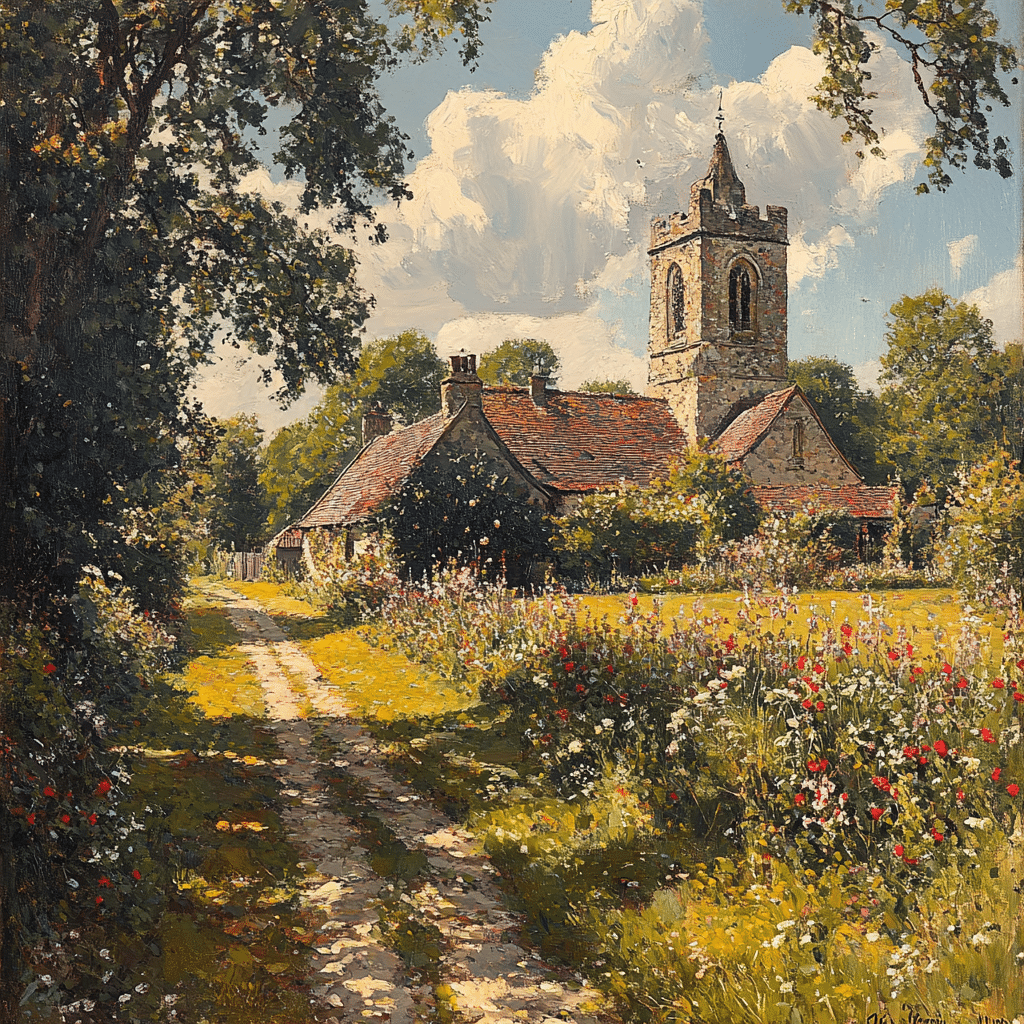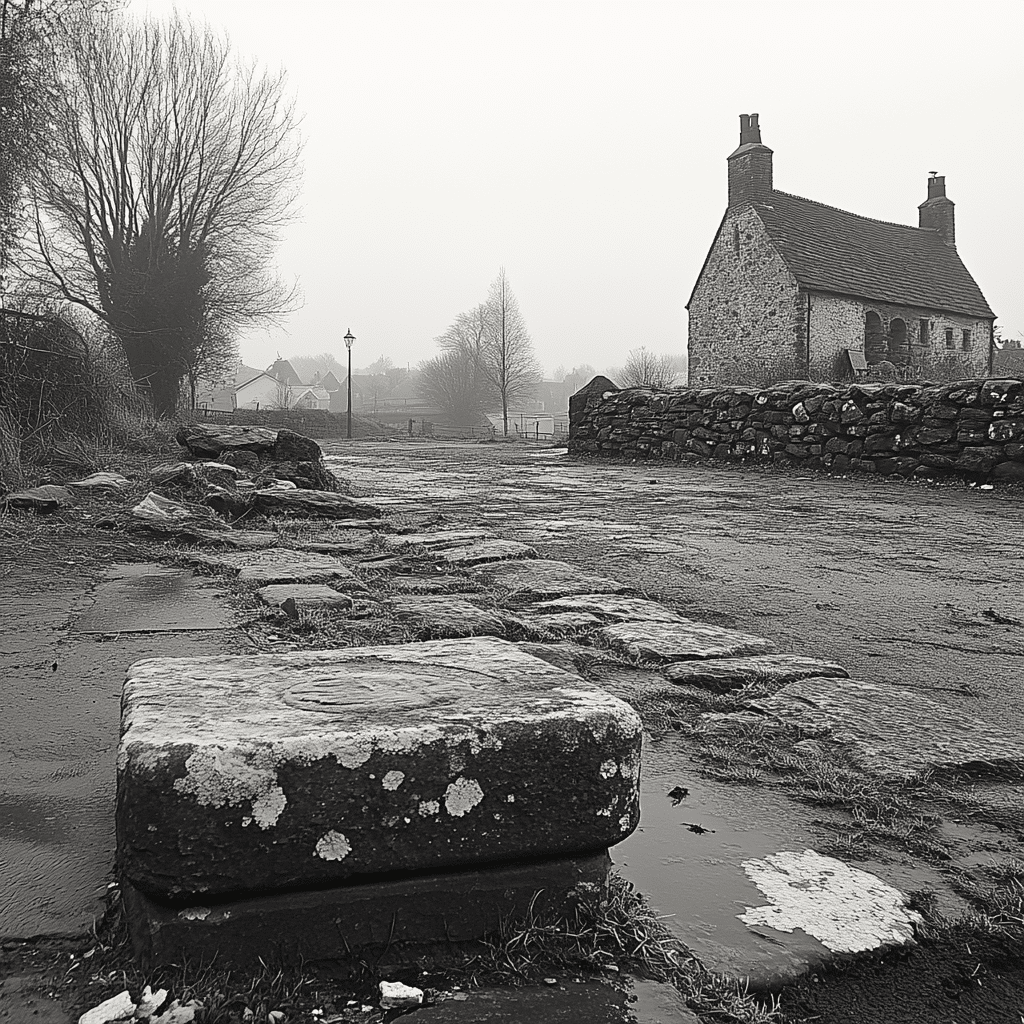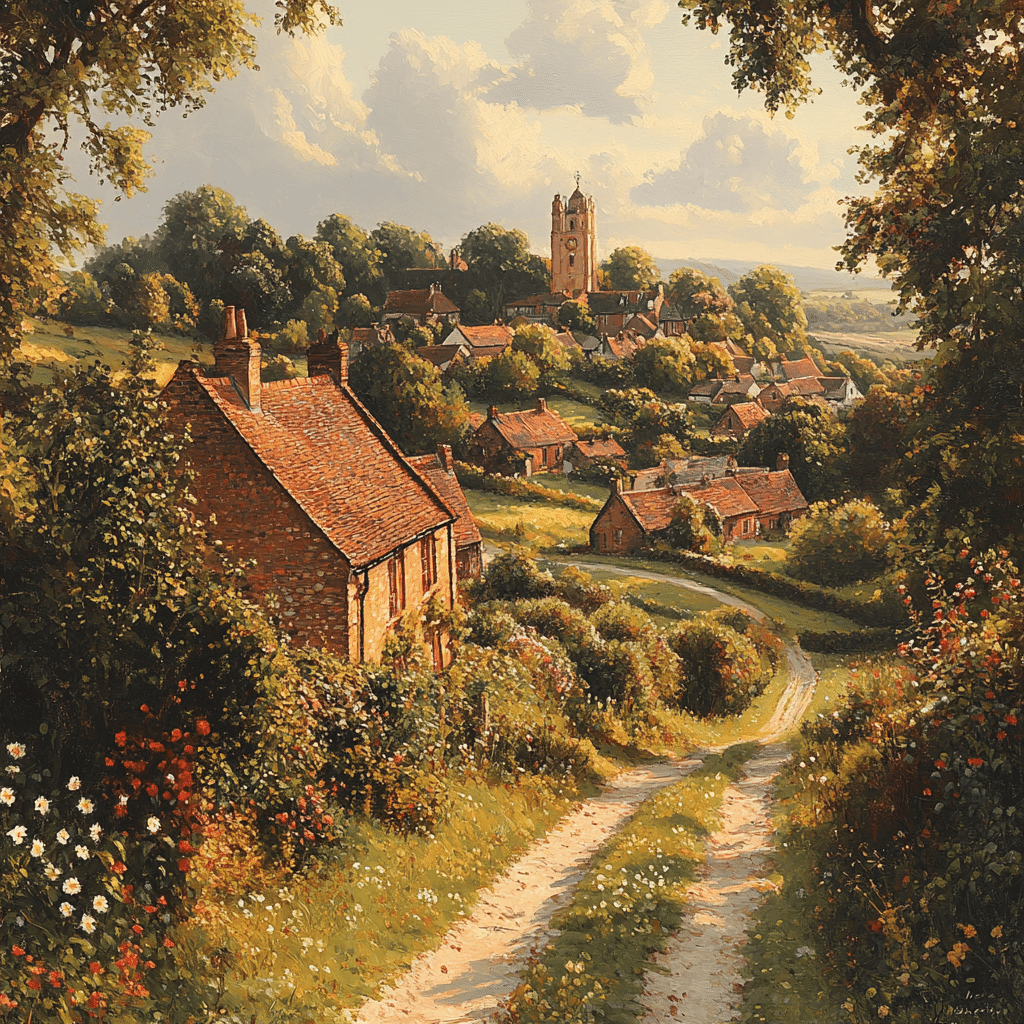Stansted Mountfitchet, a picturesque village nestled in north-west Essex near the Hertfordshire border, serves as a captivating gateway to the intriguing events of 1066, particularly the pivotal Norman Conquest of England. Just three miles north of Bishop’s Stortford and a mere two miles from Stansted Airport, this charming community manages to embrace its historical roots while accommodating modern travelers. This article explores the rich tapestry of history that has woven itself into the very fabric of the village, leading visitors on a stunning journey back in time.
The name Stansted translates to “stony place,” a nod to its rugged terrain and historical significance. The village boasts a blend of serene landscapes and historical landmarks, making it a perfect destination for anyone interested in history. Whether you’re a local resident or a curious traveler, Stansted Mountfitchet offers an experience that sparks imagination and admiration for English heritage.
In today’s context, the safety of a neighborhood is paramount, and Stansted Mountfitchet holds up well in this regard, showcasing lower-than-average burglary rates compared to the broader region. Now, let’s dive into the history and historical sites that bring Stansted Mountfitchet to life.
1. Top 5 Historical Landmarks in Stansted Mountfitchet
Stansted Mountfitchet Castle
At the heart of the village lies the iconic Stansted Mountfitchet Castle, originally built in 1066. This reconstructed motte-and-bailey castle offers an immersive experience with its historic exhibitions. Visitors can explore the castle grounds, where the remnants of the original structure still echo the powerful reign of the Normans. Expect to find informative displays that illuminate the castle’s strategic importance during and after the Conquest.
Mountfitchet Castle Museum
Adjacent to the castle, the Mountfitchet Castle Museum provides a colourful representation of Norman life. This living history museum features live demonstrations, including medieval crafts and traditional cooking methods that were prevalent during the time of the Conquest. Here, families can watch as craftsmen demonstrate techniques of the past, allowing everyone to appreciate the skills that supported a thriving community.
The Norman Church of St. Mary’s
Dating back to the 12th century, St. Mary’s Church showcases stunning Norman architecture, with its intricate stonework and historical inscriptions. The church stands as a place of worship and reflects the religious upheaval and changes brought about by the Conquest. Visitors can wander among historic graves and perhaps even attend a service, wrapping themselves in the age-old tranquility and heritage of the structure.
The Historic Village Trail
A well-marked Historic Village Trail invites history enthusiasts to discover various markers and significant sites related to the Norman Conquest. Along this trail, visitors can see how the village evolved post-1066 and understand the socio-economic dynamics that followed. Each marker tells a story of resilience and adaptation, crafting an emotional connection to the past.
The Impact of the Domesday Book
Stansted Mountfitchet features prominently in the Domesday Book, a comprehensive survey ordered by William the Conqueror in 1086. A detailed look at the village’s records reveals insights into land ownership, wealth distribution, and societal organization during this transformative period. Understanding the Domesday Book gives visitors a unique perspective on how the Conquest reshaped land tenure and governance in England.

2. The Legacy of 1066: How Stansted Mountfitchet Reflects Norman Influence
Stansted Mountfitchet is a microcosm of the widespread changes initiated by the Norman invasion. The village not only boasts architectural heritage but also embodies pivotal shifts in agricultural practices, land ownership, and local governance. The introduction of feudalism marked a significant change in social structure, creating a stronghold that allowed for the consolidation of power under the Norman lords.
Delving into how these shifts manifested in everyday life provides a more profound understanding of the ideological transformations that occurred. For instance, the changes in land distribution led to the establishment of new farming techniques that have influenced how the villages expanded over time.
Today, remnants of this Norman past can be seen in the community’s structure and landscape, reminding us that the legacy of 1066 is alive and well in Stansted Mountfitchet. It’s fascinating to walk through a village where every stone and building whispers tales of medieval life, power struggles, and cultural evolution.
3. Events and Festivals Celebrating Stansted Mountfitchet’s History
Throughout the year, Stansted Mountfitchet hosts various historical reenactments and festivals that celebrate its Norman roots. Events like the “Norman Fair” and “Medieval Market Day” invite both locals and visitors alike to travel back in time through crafts, food, and performances echoing the era of 1066.
These lively gatherings often feature participants dressed in period attire, engaging in traditional games and selling handmade goods. Families can enjoy activities like archery, pottery making, and medieval cooking demonstrations, turning history into a hands-on experience.
By attending these events, visitors can forge a connection with the past while supporting local artisans and community efforts that keep Stansted Mountfitchet’s history vibrant. There’s truly something special about experiencing history in real-time, surrounded by the laughter and camaraderie of those who appreciate their heritage.

4. Community Engagement: How the Village Preserves Its Heritage
The local population plays a critical role in preserving the history of Stansted Mountfitchet. Various community groups and historians actively participate in conservation efforts, educational programs, and promotional activities that encourage appreciation for the village’s post-Conquest heritage. This involvement fosters a strong sense of pride among residents, who recognize the importance of their historic landscape.
Efforts to engage younger generations through school programs and workshops ensure that knowledge and appreciation of the village’s history are passed down. These initiatives create a community that thrives on its past while looking forward to a vibrant future.
The commitment to preserving historical sites is evident throughout the village. Local grassroots movements often organize clean-up days and fundraising events, showcasing a dedication to maintaining the area’s character. The involvement of local volunteers reflects a community strong in spirit, eager to share their home with visitors.
5. Visiting Stansted Mountfitchet: Tips for Exploring 1066’s Heritage
Planning a visit to Stansted Mountfitchet? You’ll want to make the most of your experience, and a few practical tips can aid in an enriching adventure.
Reflecting on Stansted Mountfitchet’s Timeless Legacy
Traversing Stansted Mountfitchet’s storied past uncovers not just remnants of architecture but also a vibrant cultural legacy steeped in resilience and transformation. The significance of 1066 continues to resonate through the village’s enduring traditions, community spirit, and welcoming embrace of visitors eager to explore English history.
Stansted Mountfitchet stands as a testament to the power of place in shaping collective memory, reminding us of the enduring narratives that mold our understanding of the past. Its historical sites, community events, and ongoing preservation efforts create a rich tapestry that beckons exploration, appreciation, and connection—whether you’re a history enthusiast, a curious traveler, or a resident proud of their storied heritage.
With each visit, you uncover layers of history, making every journey to Stansted Mountfitchet not merely an exploration of the past but a celebration of an ever-living legacy.
Stansted Mountfitchet: Fun Trivia and Interesting Facts
A Glimpse into History
Did you know that Stansted Mountfitchet has a rich tapestry of history dating back to 1066? It’s a charming village in Essex that witnessed the Norman Conquest. Often overlooked, it has more to offer than just its historical sites; it has a delightful community spirit, akin to that of the beloved Steiff teddy bear, known for bringing everyone together through its cute charm and nostalgic allure. Generations have treasured these plush toys as symbols of friendship, much like the tight-knit community here.
As you stroll through Stansted Mountfitchet, you’ll find yourself transported back in time, walking past ancient buildings and fascinating landmarks. Speaking of fascinating, did you catch the recent news about the church fire in downtown Portland, Oregon? Sometimes, local events can distract from historical treasures like those in Stansted Mountfitchet, reminding us to celebrate and protect our heritage. So, while the world is experiencing changing skies, it’s wonderful to remain grounded in places that echo stories of yesteryear.
Quirky Facts About the Village
Here’s a quirky tidbit: Stansted Mountfitchet isn’t just a spot for history enthusiasts. In fact, the village has been known to host unique events that attract visitors from all walks of life. From historical reenactments to modern-day festivities, there’s always something happening that keeps the vibe lively, much like the unexpected conversations we might have around a Jamie Lee Curtis painting. The richness of art and culture flows through both realms, sparking joy and igniting passion among residents and visitors alike.
In addition to its vibrant events, you’ll stumble upon charming shops and eateries. If you’re on the go and looking for an interesting drink, you might hear whispers about a Starbucks controversy from a few years back that made headlines. But in Stansted Mountfitchet, the focus is more on enjoying the moment, sipping coffee, and exchanging stories. Plus, the area is celebrated for its stunning landscapes, making it a perfect place for a leisurely afternoon.
So, if you’re ever in the vicinity, take a detour to Stansted Mountfitchet! It’s a blend of history, culture, and unexpected delights. Whether you’re diving into the stories of the past or having fun with family and friends, there’s always something special waiting to be discovered. And while you’re there, maybe take a moment to think about adventurous financing options you could find by exploring avenues like get cash options that might help fund your future explorations!

Is Stansted Mountfitchet the same as Stansted Airport?
Stansted Mountfitchet and Stansted Airport are not the same; the village is a separate area located just a couple of miles away from the airport.
Is Stansted Mountfitchet a nice place to live?
Stansted Mountfitchet is considered a nice place to live, offering a peaceful village vibe with low crime rates and a friendly community, making it appealing to many families and individuals.
What does the name Stansted mean?
The name Stansted translates to “stony place,” which reflects the area’s historical geography.
How old is Stansted Mountfitchet castle?
Stansted Mountfitchet Castle dates back to 1066, giving visitors a fascinating glimpse into Norman England’s history.
Is Stansted closer to London?
Stansted is about 40 miles from London, making it a bit further out, but still well-connected by train and road.
How far is Stansted Mountfitchet from airport?
Stansted Mountfitchet is just 2 miles from Stansted Airport, so it’s very close and convenient for travelers.
Where to live if you work at Stansted Airport?
If you work at Stansted Airport, living in Stansted Mountfitchet or nearby towns like Bishop’s Stortford can be great options, as they offer easy access to the airport.
Is Stansted a city or town?
Stansted is classified as a village rather than a city or large town, which gives it a cozy and close-knit atmosphere.
What is the population of Stansted Mountfitchet?
The population of Stansted Mountfitchet is around 6,000 residents, creating a small but vibrant community.
Is Stansted actually in London?
Stansted isn’t technically in London; it’s situated in Essex, just outside the Greater London area.
Is Stansted in Essex or London?
Stansted is located in Essex, not London, which underscores its charm as a village away from the hustle and bustle of the city.
Is Stansted a small airport?
Stansted Airport is considered a small to medium-sized airport, mainly serving low-cost airlines and offering fewer flights than larger airports.
How do you pronounce Mountfitchet?
Mountfitchet is pronounced as “Mount-fit-chet,” with the emphasis spread evenly across the syllables.
Who owns Stansted Mountfitchet castle?
Stansted Mountfitchet Castle is owned by the Mountfitchet Castle Trust, which manages the site and its historical significance.
What is the history of Mountfitchet?
The history of Mountfitchet dates back to at least the Norman Conquest, with the castle and village playing important roles in regional developments throughout the centuries.



